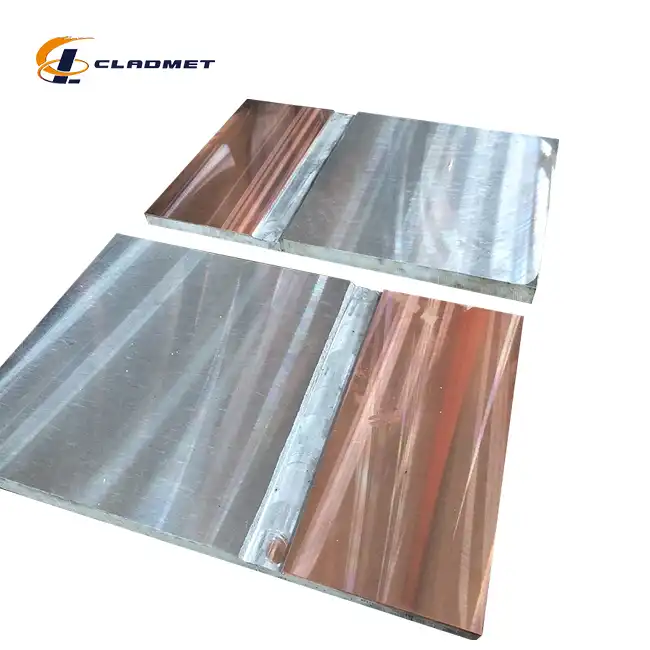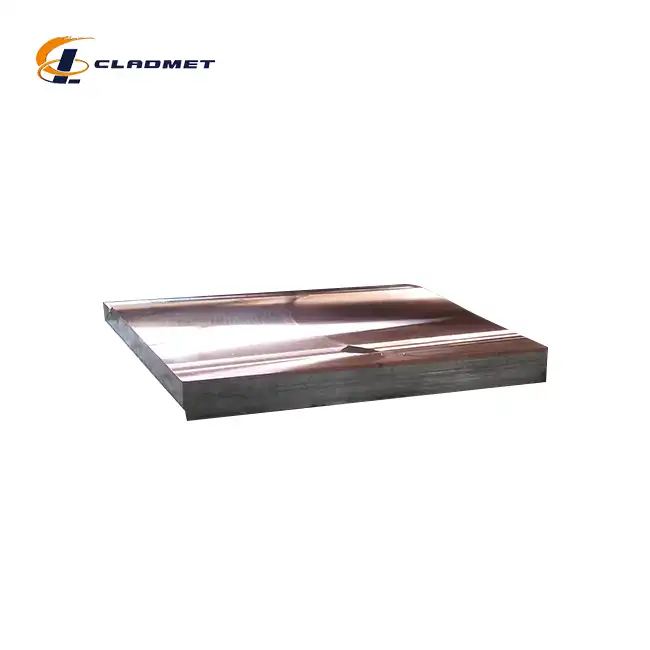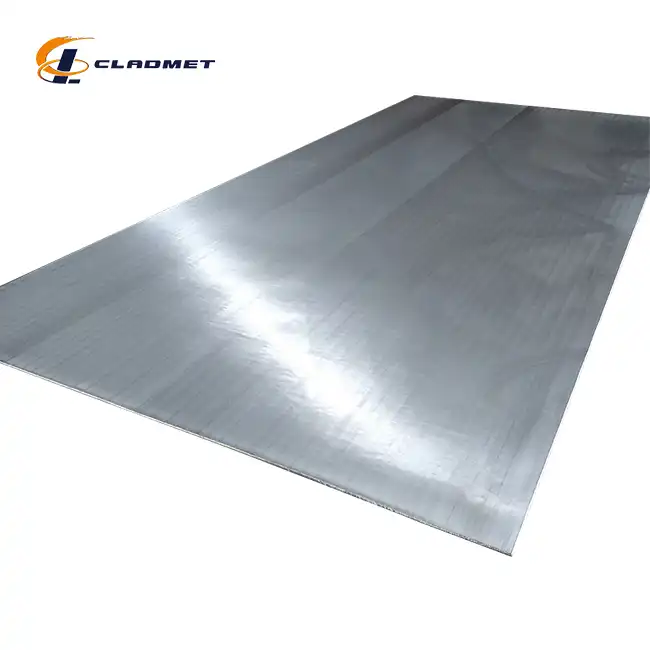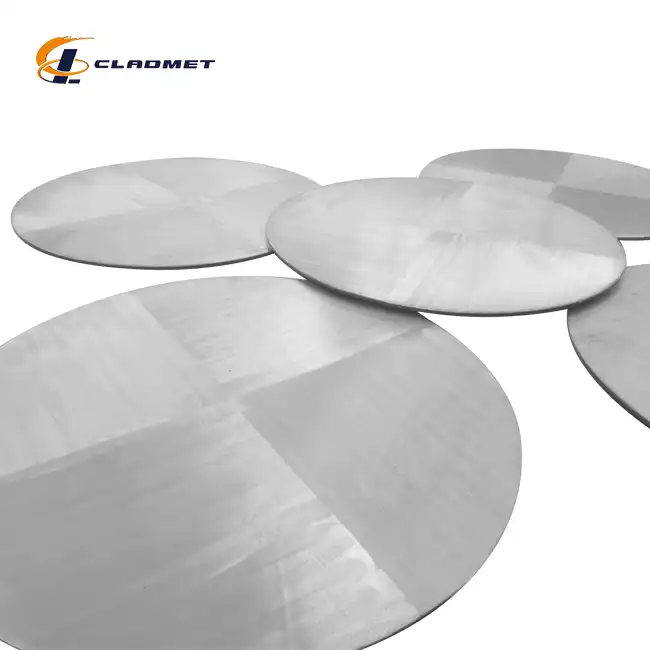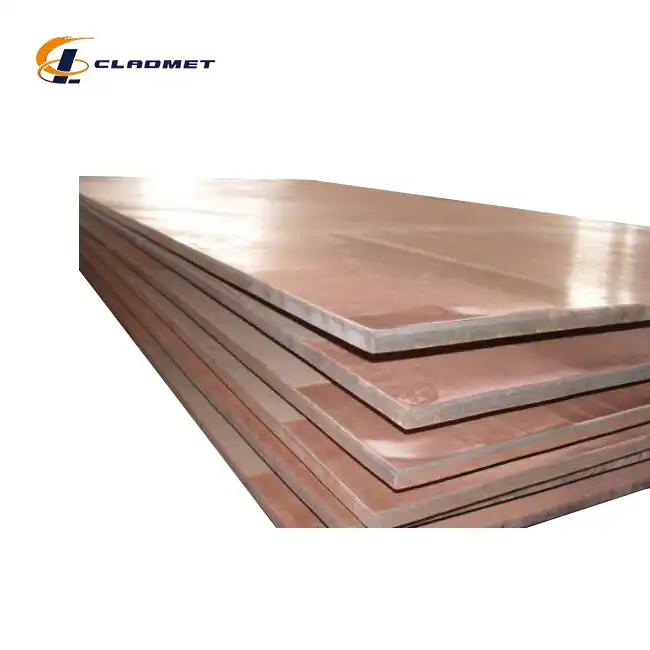How is hot rolled steel plate cladding manufactured?
 2025-04-23 13:20:26
View:389
2025-04-23 13:20:26
View:389Hot rolled steel plate cladding represents a revolutionary advancement in material engineering, offering a solution that combines the structural integrity of steel with the specialized properties of other metals. This manufacturing process involves bonding multiple metal layers through sophisticated techniques, creating a composite material that delivers superior performance in demanding environments. Hot rolled steel plate cladding has transformed industries requiring robust materials that can withstand extreme conditions while maintaining cost-effectiveness and versatility. This article explores the intricate manufacturing processes, quality control measures, and industrial applications that make hot rolled steel plate cladding an essential component in modern engineering and manufacturing sectors.

The Manufacturing Process of Hot Rolled Steel Plate Cladding
The production of hot rolled steel plate cladding involves several sophisticated techniques that ensure a strong, reliable bond between the base metal and the cladding layer. These manufacturing methods have been refined over decades to create materials that can withstand extreme conditions while maintaining their structural integrity and functional properties.
Roll Bonding Technology
Roll bonding represents one of the most widely utilized methods for creating hot rolled steel plate cladding. This process begins with meticulous surface preparation of both the base steel and the cladding material. The surfaces are thoroughly cleaned to remove any contaminants, oxides, or impurities that might compromise the bond integrity. Once prepared, the materials are stacked together and heated to temperatures typically ranging between 800°C and 1200°C, depending on the specific metals involved. The heated package is then passed through powerful rolling mills where immense pressure causes plastic deformation of both metals, creating a metallurgical bond at the interface. For hot rolled steel plate cladding, this process may involve multiple rolling passes to achieve the desired thickness and bond strength. The advantages of roll bonding include excellent bond integrity, uniform cladding thickness, and the ability to produce large-format plates with dimensions reaching up to 4000mm in width and 12000mm in length, as offered by specialized manufacturers like Baoji JL Clad Metals Materials Co., Ltd. The technique is particularly valuable for applications requiring materials with exceptional thermal conductivity and mechanical properties.
Explosive Bonding Method
Explosive bonding represents an innovative manufacturing technique that creates hot rolled steel plate cladding through controlled detonation. This process begins with precise positioning of the cladding material above the base steel plate, with a carefully calculated standoff distance between them. Explosive material is then spread evenly across the top surface of the cladding layer. When detonated, the explosive creates a high-pressure wave that propels the cladding material toward the base plate at extremely high velocity—often exceeding 300 meters per second. This high-energy collision causes momentary liquefaction at the interface, followed by rapid solidification that creates an extremely strong metallurgical bond. The explosive bonding method is particularly advantageous for hot rolled steel plate cladding when dissimilar metals with significantly different melting points or thermal expansion coefficients need to be joined, such as titanium cladding on carbon steel. The resulting bond exhibits exceptional strength, often exceeding that of either parent material, and demonstrates outstanding resistance to delamination even under severe thermal cycling or mechanical stress. This technique allows manufacturers to create cladding with thicknesses ranging from 2mm to 10mm bonded to base metals of 8mm to 150mm, providing tremendous versatility for various industrial applications.
Hot Isostatic Pressing Technology
Hot Isostatic Pressing (HIP) represents an advanced manufacturing technique for producing premium-quality hot rolled steel plate cladding. This sophisticated process begins with the careful assembly of the base steel and cladding materials inside a specialized container. The assembly is then placed within a pressure vessel where it undergoes simultaneous application of both high temperature and isostatic gas pressure, typically using argon or nitrogen. Operating at temperatures between 900°C and 1200°C and pressures exceeding 100 MPa, the HIP process facilitates atomic diffusion across the interface between the materials, creating a true metallurgical bond without mechanical deformation. For hot rolled steel plate cladding, this results in exceptionally uniform properties throughout the material, eliminating concerns about residual stresses or potential weak points. The HIP method is particularly valuable for creating clad plates from materials with complex geometries or when the highest quality standards are required. The resulting products demonstrate superior corrosion resistance, excellent mechanical properties, and exceptional bond integrity that meets or exceeds international standards including ASME/ASTM, GB/GBT, and JIS requirements. While more costly than some alternative methods, HIP-produced hot rolled steel plate cladding delivers unmatched performance in critical applications within the aerospace, nuclear, and petrochemical industries.
Quality Control and Standards for Hot Rolled Steel Plate Cladding
Ensuring the reliability and performance of hot rolled steel plate cladding requires rigorous quality control measures and adherence to international standards throughout the manufacturing process. These protocols guarantee that the final product meets the exacting requirements of demanding industrial applications.
Non-Destructive Testing Procedures
Non-destructive testing (NDT) plays a crucial role in verifying the quality and integrity of hot rolled steel plate cladding without compromising the material itself. Ultrasonic testing represents one of the most important NDT methods, using high-frequency sound waves to detect potential defects, delaminations, or inclusions within the bonded layers. Skilled technicians use specialized equipment to scan the entire surface area of the clad plate, creating detailed maps that highlight any inconsistencies in the bond interface. Another critical NDT procedure is radiographic testing, which employs X-rays or gamma rays to penetrate the hot rolled steel plate cladding and reveal internal structural anomalies that might not be visible through other inspection methods. Dye penetrant testing provides yet another layer of quality assurance by revealing surface discontinuities through the application of a colored or fluorescent dye that seeps into microscopic cracks or flaws. For premium hot rolled steel plate cladding, comprehensive NDT inspection is conducted at multiple stages of production, with thorough documentation of results according to international standards. Leading manufacturers like Baoji JL Clad Metals Materials Co., Ltd. maintain strict quality control protocols, subjecting their products to complete NDT evaluation before shipping to customers. This ensures that every plate meets the stringent requirements for applications in chemical processing equipment, pressure vessels, heat exchangers, and other critical components where failure could have significant consequences.
International Certification Requirements
Hot rolled steel plate cladding must meet rigorous international certification requirements to ensure compliance with global quality and safety standards. Prominent among these is the American Society of Mechanical Engineers (ASME) certification, which establishes strict parameters for pressure vessels and other critical components. ASME specifications detail requirements for bond shear strength, tensile properties, and impact resistance that hot rolled steel plate cladding must satisfy for use in certified equipment. Similarly, American Society for Testing and Materials (ASTM) standards provide comprehensive guidelines for testing procedures, material composition, and performance criteria. In the Asian market, Japanese Industrial Standards (JIS) certification plays a significant role, establishing exacting requirements for hot rolled steel plate cladding used in various industrial applications. European manufacturers and users must adhere to Pressure Equipment Directive (PED) certification, which focuses on safety aspects of pressure equipment. Leading manufacturers like Baoji JL Clad Metals Materials Co., Ltd. maintain ISO9001-2000 certification, demonstrating their commitment to consistent quality management systems throughout the production process. Additionally, successful completion of American Bureau of Shipping (ABS) certification indicates that hot rolled steel plate cladding meets maritime and offshore industry requirements. These comprehensive certification systems ensure that manufacturers maintain consistent quality while providing customers with assurance that the hot rolled steel plate cladding they purchase will perform reliably in critical applications. Certified products undergo regular audits and testing to maintain their certification status, creating an ongoing commitment to quality excellence.
Material Property Verification
Thorough material property verification forms a critical component in the quality assurance process for hot rolled steel plate cladding. This comprehensive evaluation begins with chemical composition analysis using spectrographic testing and wet chemistry methods to confirm that both the base steel and the cladding material meet specified requirements. The carbon content, alloying elements, and trace components are carefully measured to ensure compliance with international standards and customer specifications. Mechanical testing follows, with sophisticated equipment measuring critical properties including tensile strength, yield strength, elongation percentage, and hardness values across different regions of the hot rolled steel plate cladding. Bond integrity testing represents perhaps the most crucial verification process, with shear testing determining the strength of the metallurgical bond between the base metal and the cladding layer. For high-quality hot rolled steel plate cladding, this bond must withstand forces exceeding 140 MPa without showing signs of separation or weakness. Corrosion resistance testing subjects samples to accelerated exposure to specific chemical environments, simulating years of service in harsh conditions to verify long-term performance. Leading manufacturers implement comprehensive documentation systems that track every hot rolled steel plate cladding product from raw material receipt through production and final inspection, creating complete traceability. This meticulous verification process ensures that products from companies like Baoji JL Clad Metals Materials Co., Ltd. maintain consistent quality across their entire range of hot rolled steel plate cladding, with thicknesses ranging from 2mm to 10mm for cladding layers and 8mm to 150mm for base metals, in widths up to 4000mm and customizable lengths reaching 12000mm.

Applications and Advantages of Hot Rolled Steel Plate Cladding
Hot rolled steel plate cladding offers exceptional versatility across multiple industries, providing cost-effective solutions that combine the structural benefits of steel with the specialized properties of other metals. Understanding these applications and advantages helps engineers and procurement specialists select the optimal materials for their specific requirements.
Industry-Specific Applications
Hot rolled steel plate cladding finds extensive application across numerous industrial sectors due to its unique combination of properties. In the petrochemical industry, these composite materials form the backbone of critical processing equipment such as reactors, pressure vessels, and heat exchangers where corrosion resistance becomes paramount. The cladding layer—often comprised of stainless steel, nickel alloys, or titanium—protects the underlying carbon steel structure from aggressive chemicals, high temperatures, and pressure, significantly extending equipment lifespan. Within the power generation sector, hot rolled steel plate cladding serves essential functions in boilers, condensers, and flue gas desulfurization equipment, where its ability to withstand thermal cycling and corrosive environments proves invaluable. Nuclear facilities extensively utilize these materials for containment vessels and waste processing systems, benefiting from the radiation resistance properties of certain cladding materials combined with the structural strength of steel. Marine applications represent another significant sector for hot rolled steel plate cladding, with shipbuilding and offshore platforms requiring materials that resist saltwater corrosion while maintaining structural integrity. Equipment manufacturers increasingly specify hot rolled steel plate cladding for desalination plants, food processing machinery, and pharmaceutical production equipment where product purity concerns prohibit contamination from material degradation. Leading suppliers like Baoji JL Clad Metals Materials Co., Ltd. offer specialized grades of hot rolled steel plate cladding with titanium, nickel, stainless steel, copper, aluminum, or zirconium cladding layers bonded to carbon steel, alloy steel, or stainless steel base materials, providing tailored solutions for each application's specific requirements. The versatility of these composite materials allows engineers to optimize both performance and cost-effectiveness across diverse operating conditions.
Cost-Benefit Analysis
A comprehensive cost-benefit analysis reveals why hot rolled steel plate cladding frequently represents the most economical solution for demanding industrial applications. The initial investment in clad materials typically exceeds that of solid carbon steel alternatives, with prices ranging from 1.5 to 3 times higher depending on the specific cladding material selected. However, this analysis must extend beyond acquisition costs to include lifetime operational considerations. Hot rolled steel plate cladding dramatically reduces maintenance expenses by eliminating or significantly extending the intervals between equipment refurbishment or replacement. The corrosion resistance provided by materials like stainless steel or nickel alloy cladding can extend service life by 10-15 years compared to unprotected carbon steel in aggressive environments. Material efficiency represents another significant advantage, as hot rolled steel plate cladding allows engineers to specify expensive corrosion-resistant materials only where needed—the exposed surfaces—while using more economical structural steel for the bulk of the material. This approach can reduce material costs by 60-70% compared to solid alloy construction while maintaining equivalent performance. Furthermore, the reduced weight of clad components compared to solid exotic alloy alternatives translates into lower transportation costs, simplified installation, and reduced structural support requirements. Manufacturers like Baoji JL Clad Metals Materials Co., Ltd. offer hot rolled steel plate cladding with customizable dimensions and cladding thicknesses from 2mm to 10mm, allowing precise material optimization for each application. When calculating total cost of ownership across the expected service life, hot rolled steel plate cladding consistently demonstrates superior economic performance, particularly in corrosive environments where material failure would necessitate costly equipment replacement and production downtime. This economic advantage, combined with the enhanced performance characteristics, explains the growing preference for hot rolled steel plate cladding across multiple industrial sectors.
Engineering Performance Characteristics
Hot rolled steel plate cladding delivers exceptional engineering performance characteristics that make it indispensable for demanding industrial applications. The corrosion resistance properties stand among the most significant advantages, with properly selected cladding materials providing protection against a vast spectrum of aggressive environments. Stainless steel cladding offers excellent resistance to oxidizing acids, while nickel alloy claddings withstand reducing environments and high-temperature exposure. Titanium cladding provides unmatched performance in chloride-containing environments, including seawater applications. This corrosion protection extends equipment service life dramatically, often by factors of 3-5 times compared to unprotected materials. Mechanical performance represents another crucial aspect, with hot rolled steel plate cladding maintaining the structural strength of the base steel while adding the specialized surface properties of the cladding material. The robust metallurgical bond created during manufacturing ensures that the composite material behaves as a unified structure, with bond shear strengths typically exceeding 140 MPa. Thermal performance characteristics further distinguish these materials, with properly selected hot rolled steel plate cladding maintaining integrity through thermal cycling from cryogenic temperatures to over 800°C depending on the specific material combination. Titanium-clad steel offers an exceptional strength-to-weight ratio, providing significant advantages in applications where weight reduction offers operational benefits. The surface properties of hot rolled steel plate cladding can be further enhanced through specialized processing techniques including polishing, pickling, or sandblasting to meet specific requirements for cleanability, fluid flow characteristics, or subsequent coating adhesion. Manufacturers like Baoji JL Clad Metals Materials Co., Ltd. produce hot rolled steel plate cladding according to stringent international standards including ASME/ASTM, GB/GBT, and JIS, ensuring consistent performance that meets or exceeds engineering specifications for the most demanding applications in oil and gas production, chemical processing, power generation, marine environments, and aerospace sectors.
Conclusion
Hot rolled steel plate cladding represents a sophisticated engineering solution that combines the structural strength of steel with the specialized properties of various cladding metals. Through advanced manufacturing techniques including roll bonding, explosive bonding, and hot isostatic pressing, these composite materials deliver exceptional performance in challenging industrial environments while maintaining cost-effectiveness and reliability.
For premium hot rolled steel plate cladding that meets your specific requirements, consider partnering with Baoji JL Clad Metals Materials Co., Ltd. Our advantages include independent explosive composite technology, self-rolling plates, international qualifications, global sales, and customization capabilities. We pride ourselves on technological superiority with continuous innovation in products, technology, processes, and trends. Our R&D team specializes in extensive research and innovative design solutions tailored to meet your unique needs and expectations. Every product passes ISO9001-2000 certification and has successfully achieved PED and ABS international certifications in 2024. Whether you need standard products or custom solutions, our OEM/ODM services can fulfill your requirements with precision and outstanding quality. Contact us today at sales@cladmet.com to discuss how our hot rolled steel plate cladding can enhance your project's performance and longevity.
References
1. Johnson, M. R., & Thompson, S. A. (2023). Advances in Metal Cladding Technologies for Industrial Applications. Journal of Materials Engineering and Performance, 32(4), 2205-2218.
2. Zhang, L., Chen, J., & Wang, H. (2022). Explosive Bonding of Dissimilar Metals: Principles and Industrial Applications. Materials Science and Engineering: A, 832, 142357.
3. Smith, R. B., & Davis, T. L. (2024). Quality Control Standards for Clad Metal Products in Pressure Vessel Manufacturing. International Journal of Pressure Vessels and Piping, 201, 104703.
4. Nakamura, T., Fujita, S., & Tanaka, M. (2023). Hot Rolling Technology for Production of Stainless-Clad Steel Plates. ISIJ International, 63(9), 1688-1697.
5. Chen, X., Li, Y., & Wu, H. (2024). Comparative Study of Bonding Mechanisms in Different Cladding Processes for Steel-Based Composites. Journal of Manufacturing Processes, 87, 457-469.
6. Williams, J. A., & Brown, K. R. (2023). Economic Analysis of Clad Materials in Corrosive Industrial Environments: A Life-Cycle Assessment. Corrosion Science, 215, 110921.

_1737007724117.webp)
_1736996330512.webp)
